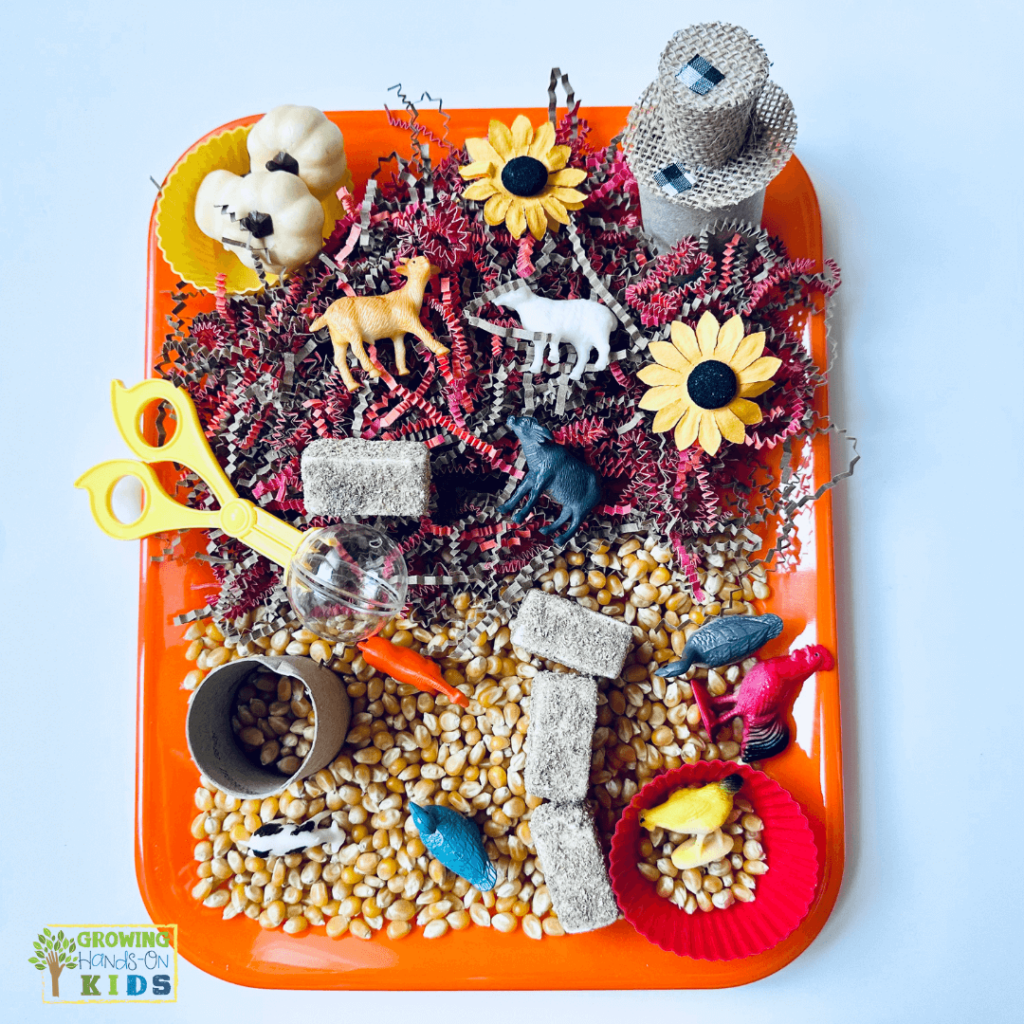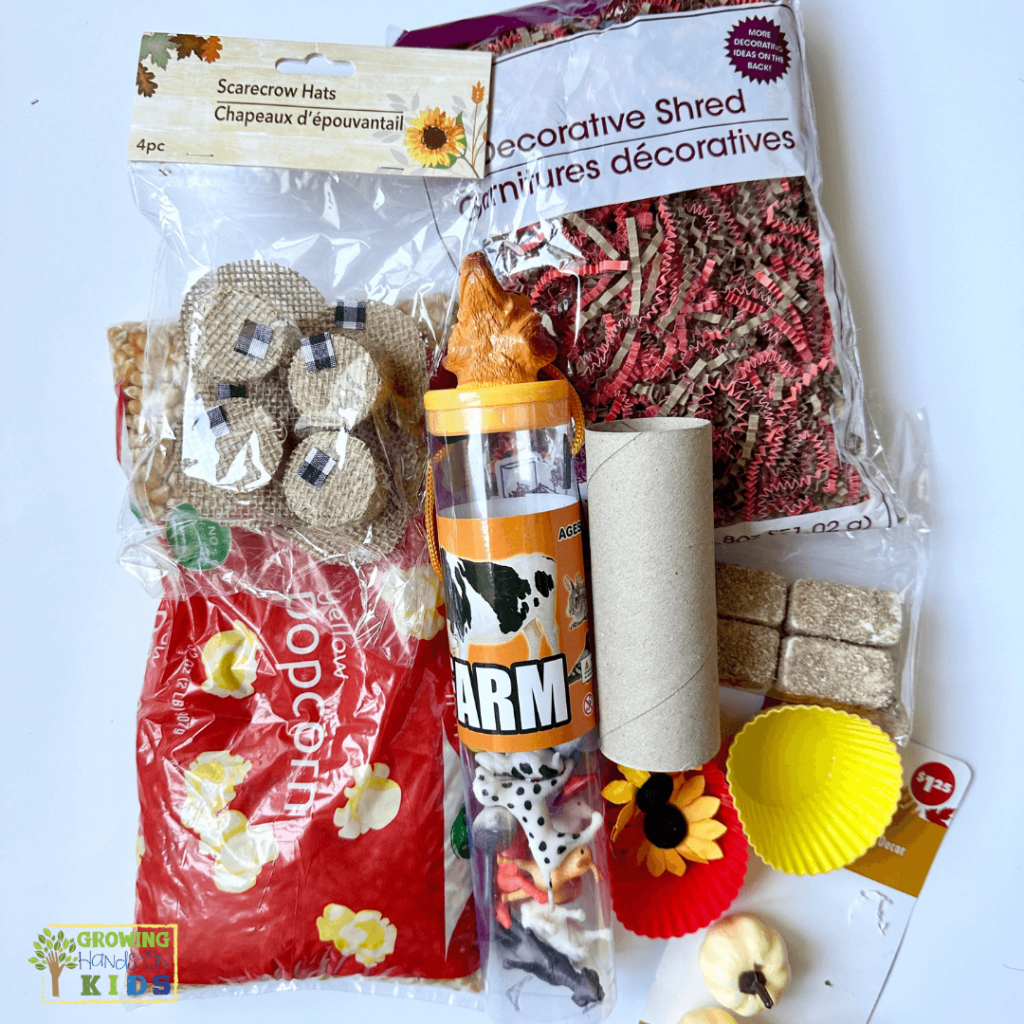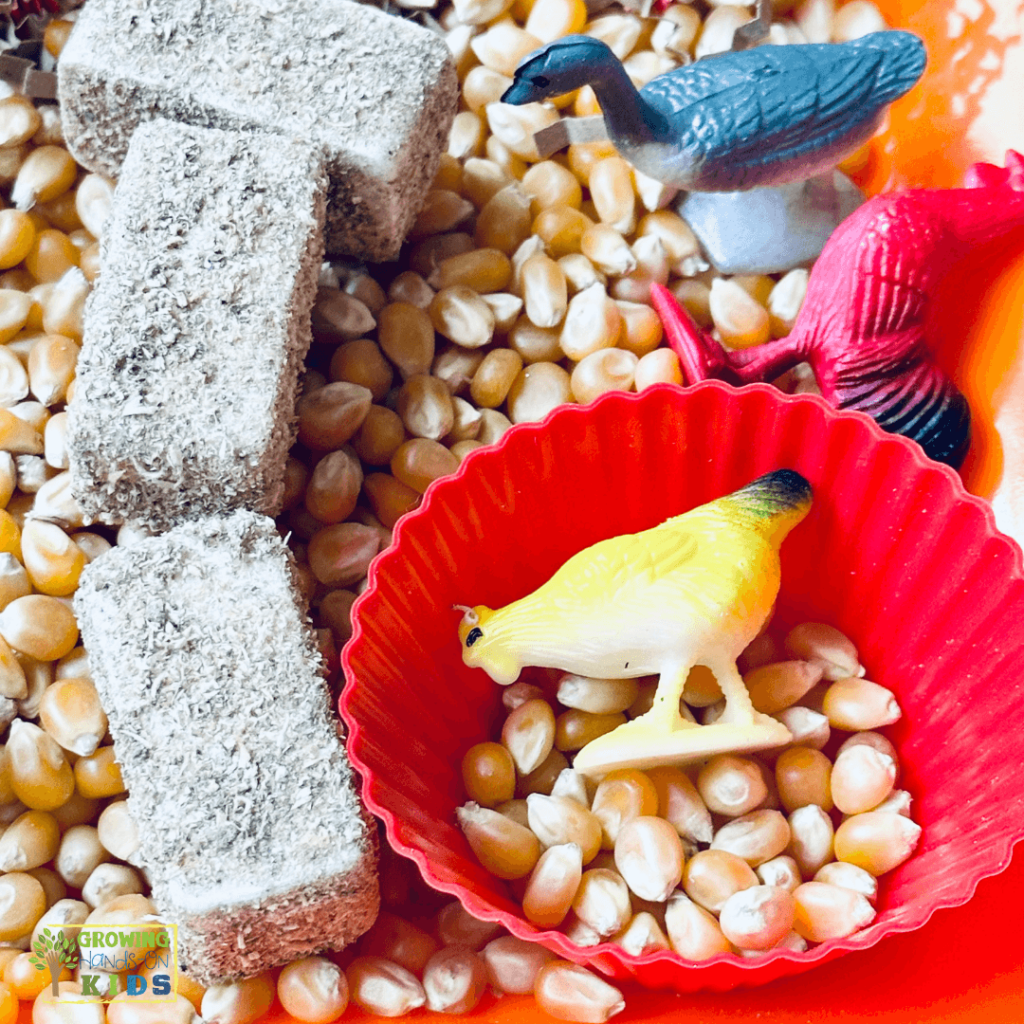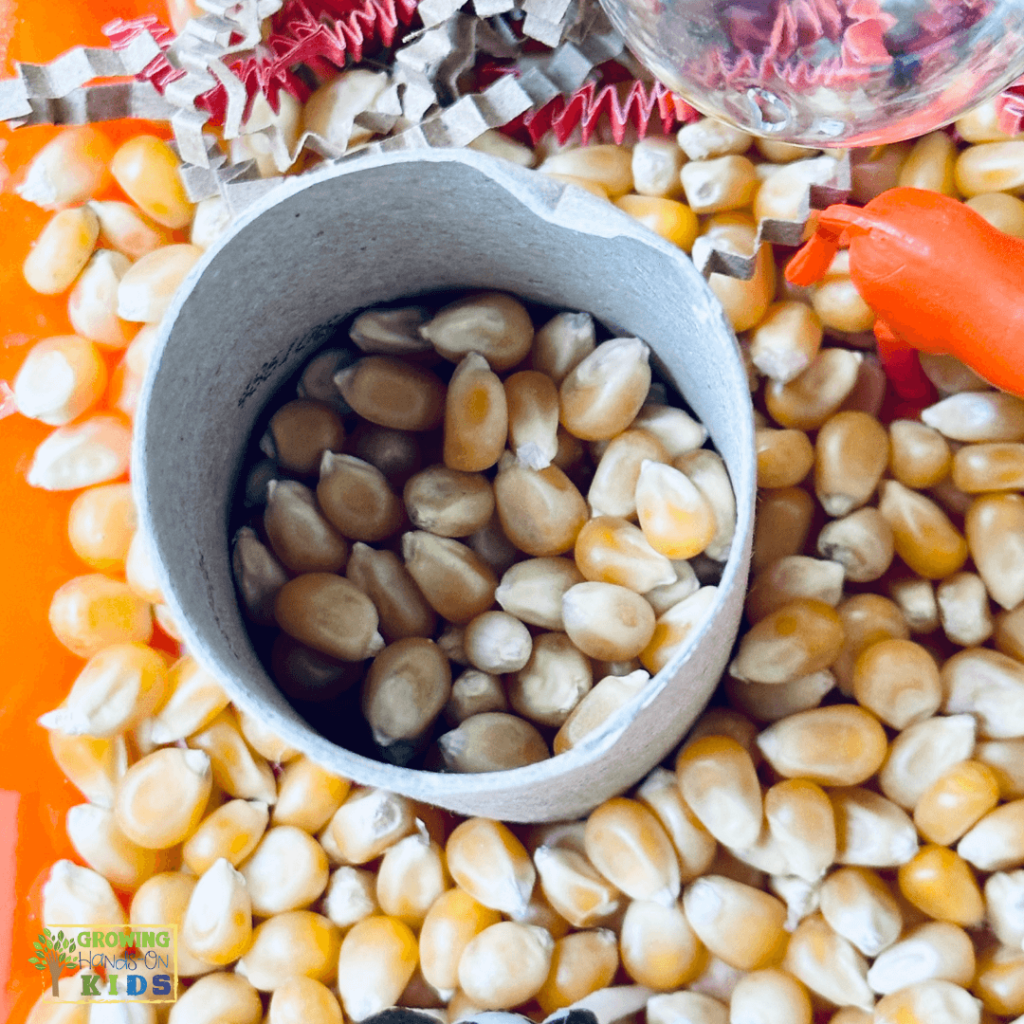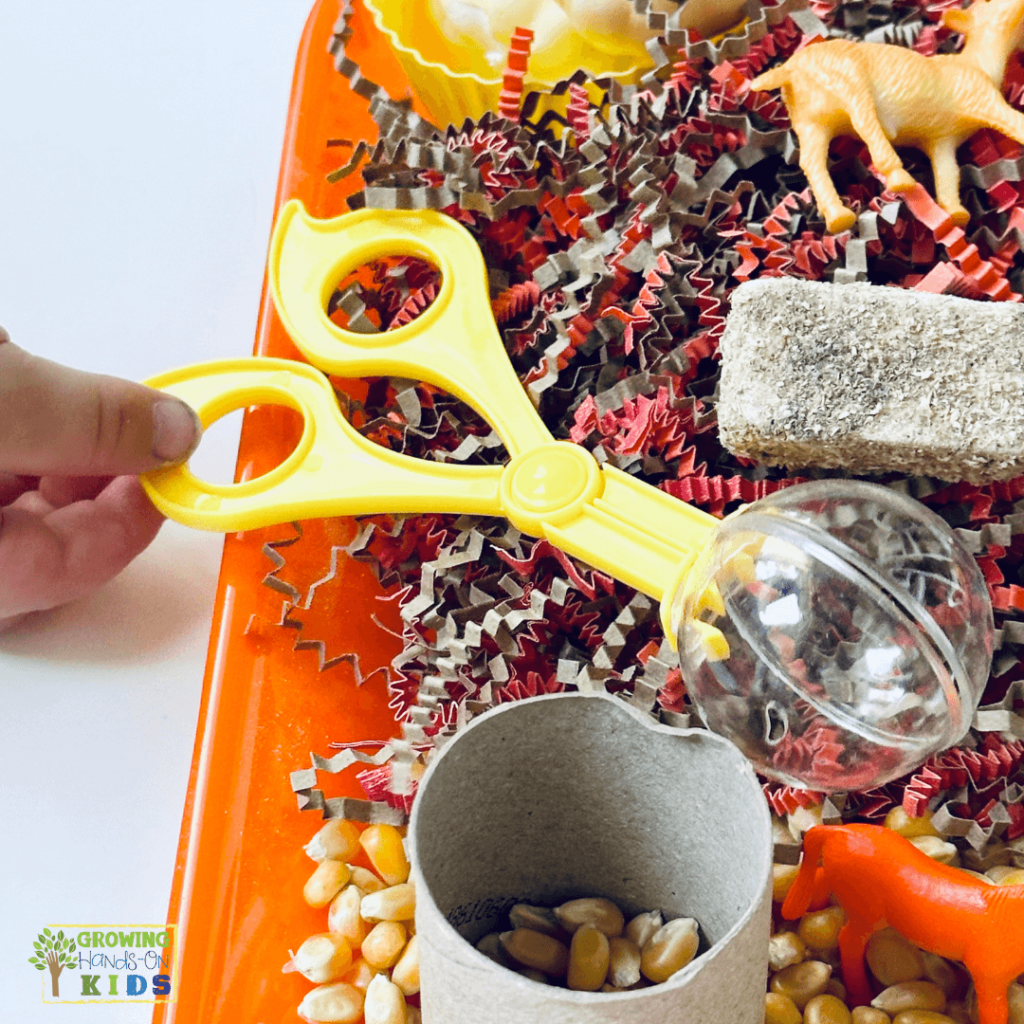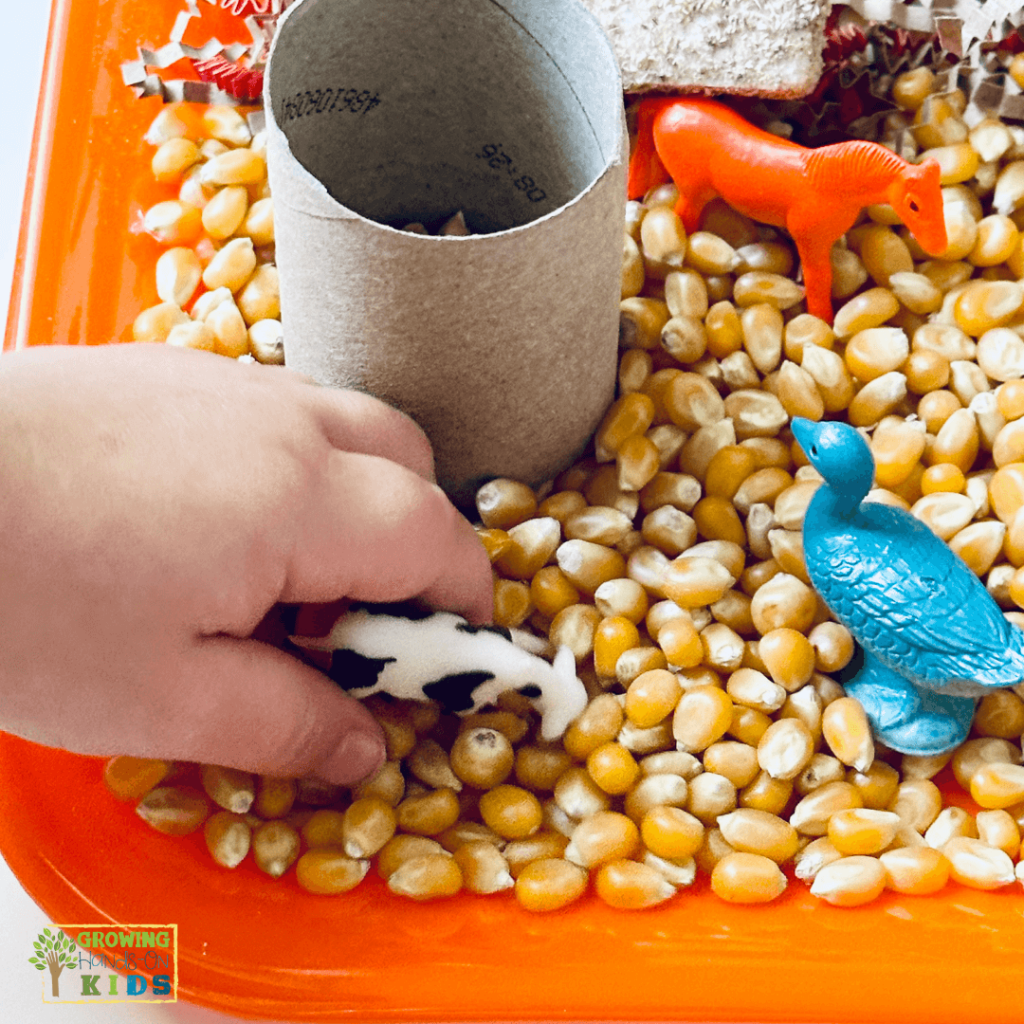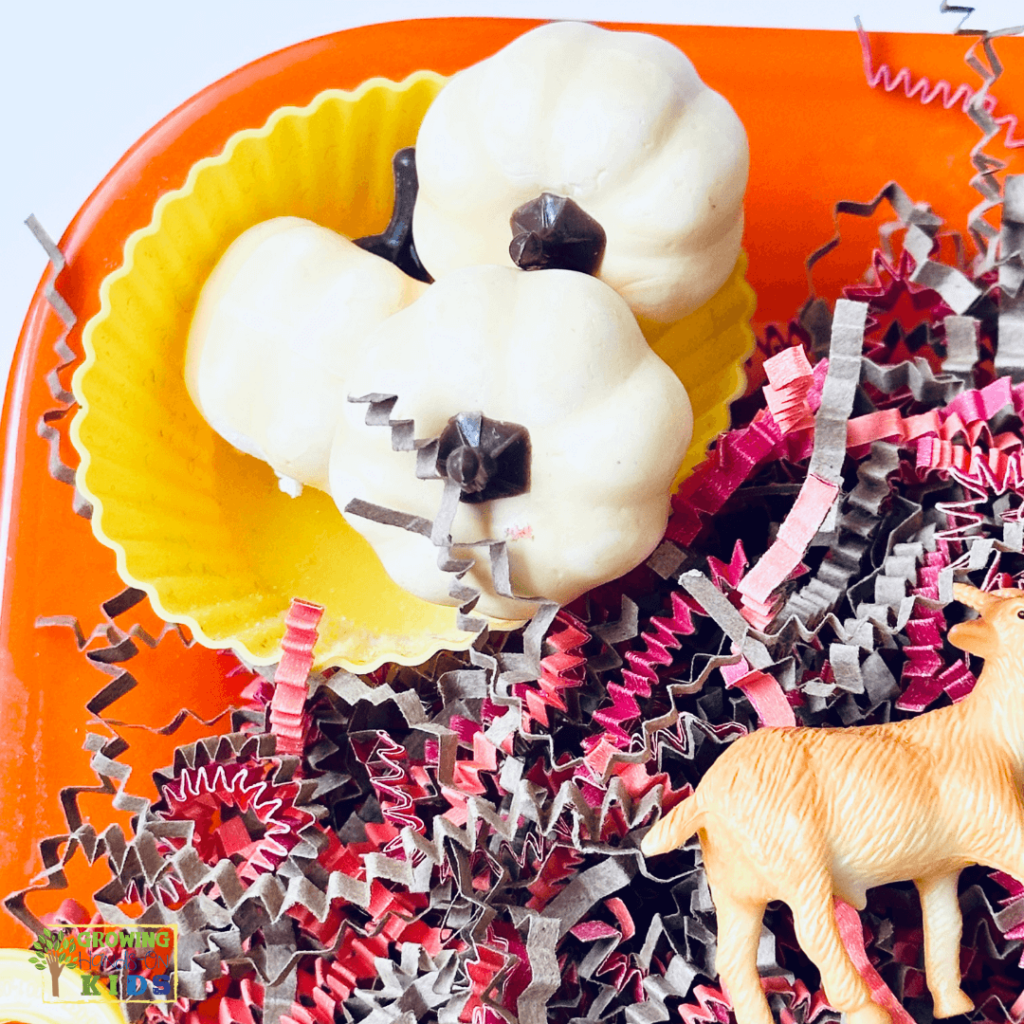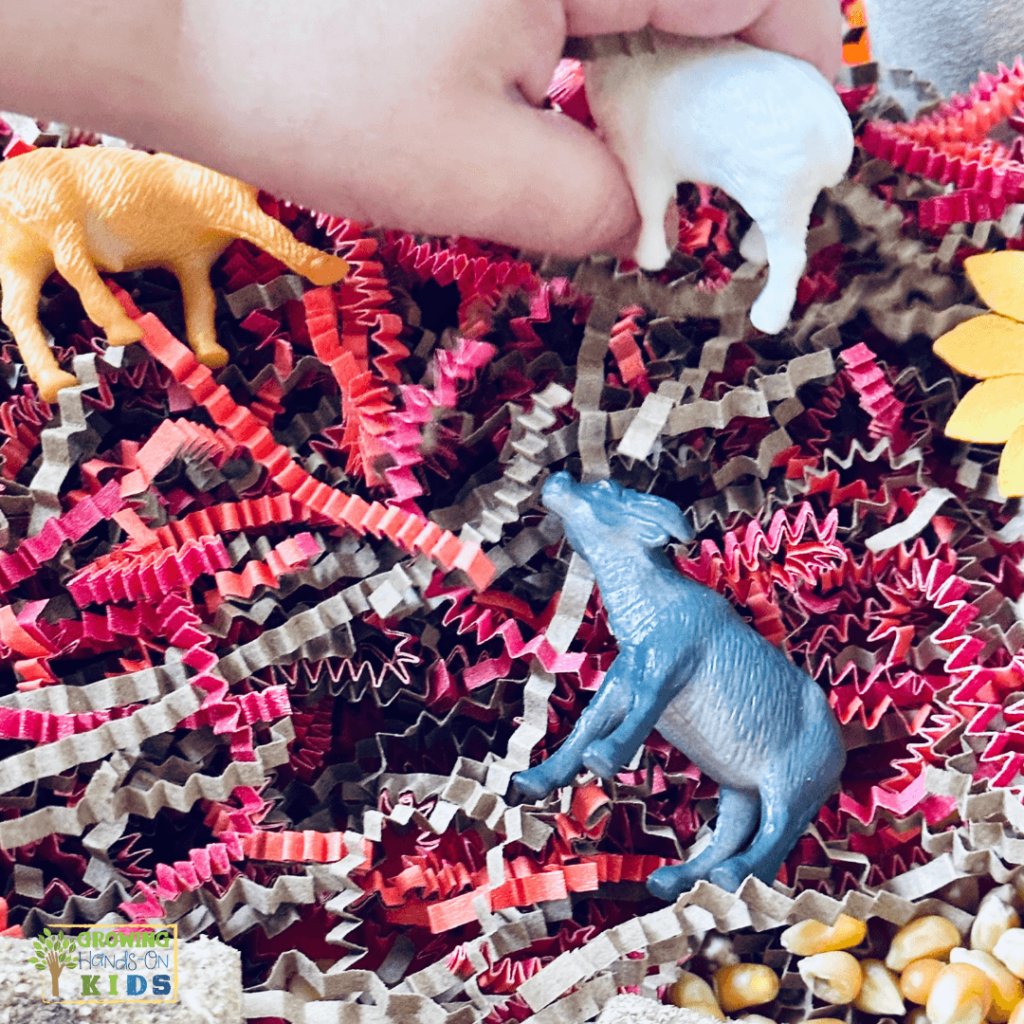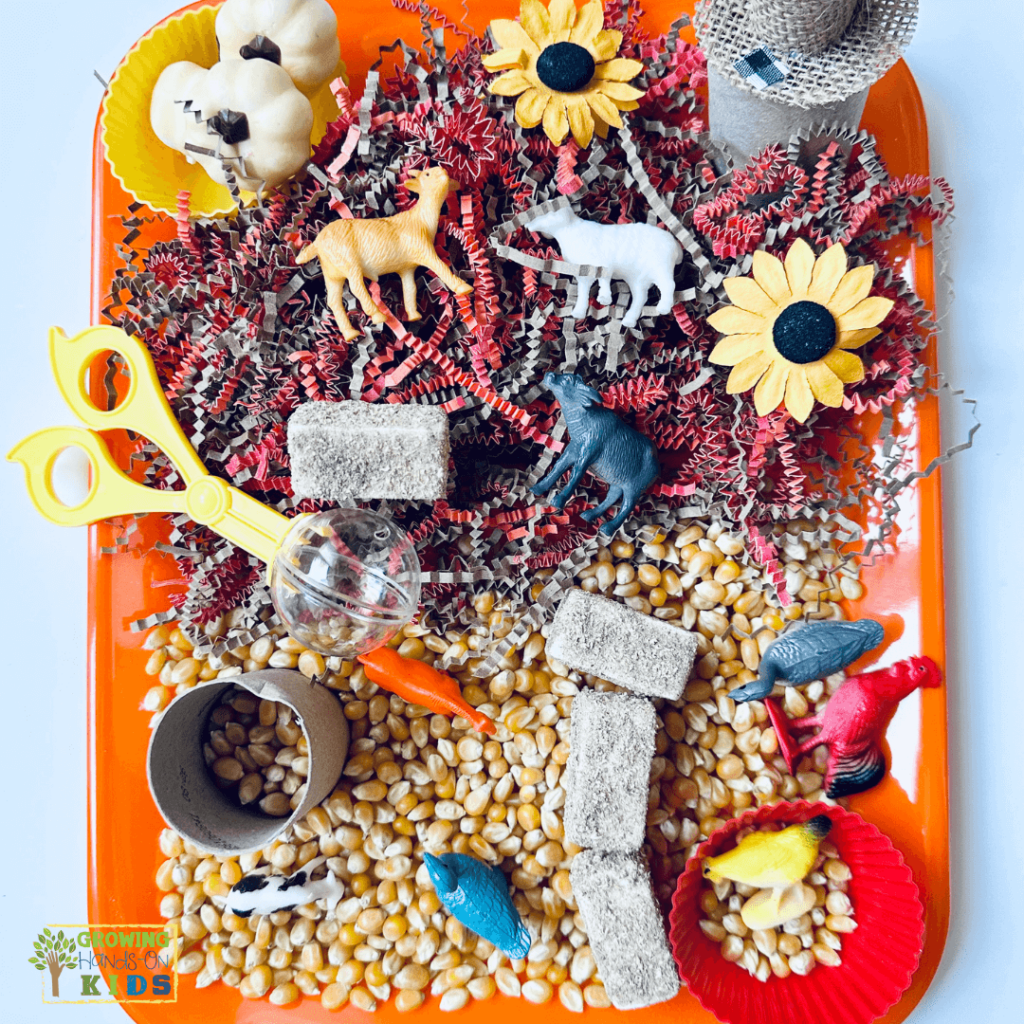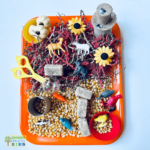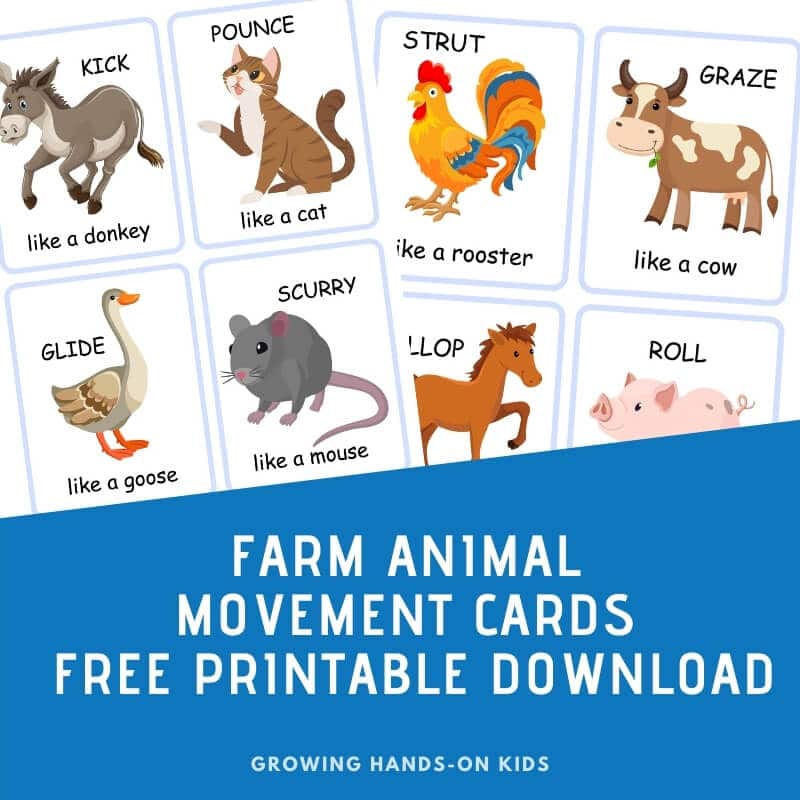Exploring a Farm Animal Sensory Bin
Affiliate and Referral links are used below to promote products I love and recommend. I receive a commission on any purchases made through these links. Please see my disclosure policy for more details. As an Amazon Associate, I earn from qualifying purchases.
Do you have a child obsessed with farm animals like mine? Then this farm animal sensory bin is the perfect engaging activity for your preschooler or kindergartener. My daughter even loved sensory bins as she got older, so you can adapt this for any age.
A farm animal sensory bin is a fantastic way to engage your child’s senses while encouraging imaginative play. This DIY activity is simple to set up and offers endless opportunities for learning and fun. Plus, sensory play has numerous developmental benefits, from improving motor skills to enhancing language development. So grab your materials, set up a mini farm, and let the sensory exploration begin!
Materials You’ll Need for a Farm-Themed Sensory Bin
You will need:
Sensory storage bin or sensory tray
Scoops or measuring spoons
Popcorn – Purchase from your local grocery store or Amazon
Fall-colored decorative shred – You can purchase this from the dollar store or Amazon
These are the items you can add to your sensory bin:
Mini Hay Bales – Can be purchased from the dollar store or Amazon
Mini scarecrow hats – Dollar store or Amazon
Mini sunflowers – Dollar store or Amazon
Mini white pumpkins – Dollar store or Amazon
Toilet paper roll (I cut mine in half)
Variety of mini farm animals – Found on Amazon
How to Set Up Your Farm Animal Sensory Bin
Choose your bin or tray to set up your sensory bin in. If you want to keep your sensory bin set up for a while, consider using a bin that has a lid for easy storage.
Add your base materials, in this case, popcorn and Fall-colored decorative shreds. Layer your decorations such as the hay bales, scarecrow hats, mini sunflowers, and mini white pumpkins on top of the sensory bin base.
Next, add your farm animals on top. Scatter some scoops or measuring spoons around to encourage more digging and play.
Tips for Enhancing the Experience
- Rotate materials: To keep the activity fresh, rotate the sensory materials every few weeks. One day you could use corn kernels, and the next time try sand or soil. Add different animals or digging tools.
- Incorporate sound: Play farm animal sounds or nursery rhymes in the background to make the experience more engaging.
- Make it a learning moment: Use the sensory bin to teach your child about animal sounds, names, and habitats. Ask them questions or challenge them to sort the animals by size or type.
Benefits of Sensory Bins
There are many benefits of sensory bins for play and child development. A few of those include:
Fine Motor Skill Development: Eye-hand development, bilateral coordination, and finger manipulation are just a few of the skills that can be encouraged through using sensory bins. This is why I always include scoops, cups, and other smaller items in a sensory bin. Please follow all guidelines for younger children and swallowing/choking hazards.
Sensory Experiences: Children at this age learn through play and exploring. Sensory bins encourage so many sensorimotor experiences for a child through touch, smell, sight, and even movement.
Language Development: As the child plays with the animals and other materials, they can learn new vocabulary words and practice speech. Encourage them to name each animal and describe the textures they feel.
Relaxation and Self-Regulation: Sensory bins can be used as a calming and relaxation tool (with a few rules in place). The rhythmic and repetitive movements plus the textures can help children relax and self-regulate before or after a stressful situation.
Farm Animal Sensory Bin
Equipment
- 1 Sensory storage bin or sensory tray
- 2-3 Scoops or measuring spoons
- Silicone muffin cups
- Popcorn
- Fall-colored decorative shred
Materials
Instructions
- Choose your bin or tray to set up your sensory bin in.
- Add your base materials, in this case, popcorn and Fall-colored decorative shreds.
- Layer your decorations such as the hay bales, scarecrow hats, mini sunflowers, and mini white pumpkins on top of the sensory bin base.
- Next, add your farm animals on top.
- Scatter some scoops or measuring spoons around to encourage more digging and play.
You May Also Like:

Heather Greutman, COTA
Heather Greutman is a Certified Occupational Therapy Assistant with experience in school-based OT services for preschool through high school. She uses her background to share child development tips, tools, and strategies for parents, educators, and therapists. She is the author of many ebooks including The Basics of Fine Motor Skills, and Basics of Pre-Writing Skills, and co-author of Sensory Processing Explained: A Handbook for Parents and Educators.

